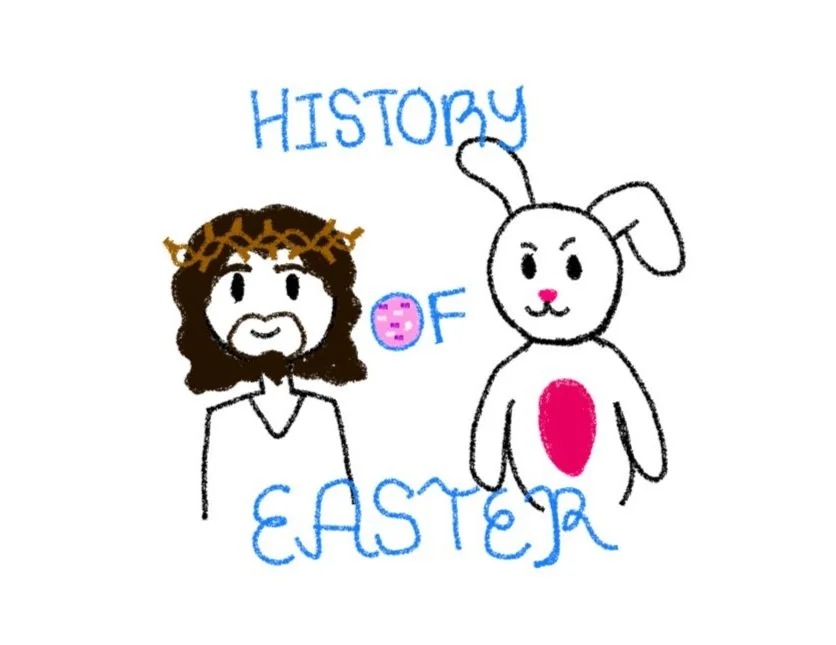The History of Easter
Image by Mimi Doyle ‘26
What does an oversized bunny who lays eggs filled with candy have in common with Jesus Christ? That is a question that many people find themselves asking on Easter, an originally Christian holiday that has found its way onto secular calendars. Originally, it was a day of celebration for followers of Christ as it marked the Sunday that Jesus was resurrected from the dead. It follows 40 days of fasting and contemplation, from Ash Wednesday (when Jesus entered Jerusalem and the people greeted him with palm leaves) to Good Friday (When Jesus was crucified). But how did all of this connect to the Easter we see today?
Originally, Easter, then known as Pesach, was only celebrated by Jesus’s original followers, mostly of Jewish descent. They celebrated the holiday two days after the Jewish celebration of Pentecost so that Easter could fall on any day of the week. It started to gain widespread popularity with the Roman Empire– specifically in 325 A.D.– when Emperor Constantine and the council of Nicea made Easter a Sunday holiday, the first Sunday to follow the full moon after the Spring Equinox.
As Christianity spread throughout Europe, new traditions burst from Pagan customs and practices. This is when the word Easter began to be more widely used. For one, the egg had been a mythological symbol of birth for thousands of years. Christians adopted this tradition sometime in the 13th century, seeing their red-colored Easter eggs as metaphors for Christ: the yoke representing his emergence from the tomb, and the red paint, the blood he shed on the cross.
Another symbol of life was the fertile bunny rabbit. Beginning in the 16th century, parents told their children that if they behaved the day before Easter, the Easter Bunny would come and lay colorful eggs filled with hidden surprises. Children would work hard to build nests in their homes to entice the rabbits to go to their houses. Thus began the Easter Egg Hunt and the Easter Egg Basket.
In modern times, Easter is celebrated in many different ways. There are people celebrating the middle of spring– basking in the sunlight, looking at the beautiful and vibrant spring flowers, and looking ahead to new beginnings. Others look to recognize the bravery and selflessness of a man who stood against it all and always fought for justice and peace until the day he died. Whatever the tradition, Easter remains a day worth celebrating—whether for the joy of new beginnings, the beauty of nature, or the deeper reflection on the sacrifice and hope at its core. It is a day that unites people across cultures and beliefs, reminding us of the power of renewal, love, and the shared desire for peace and harmony. Happy Easter to all!

